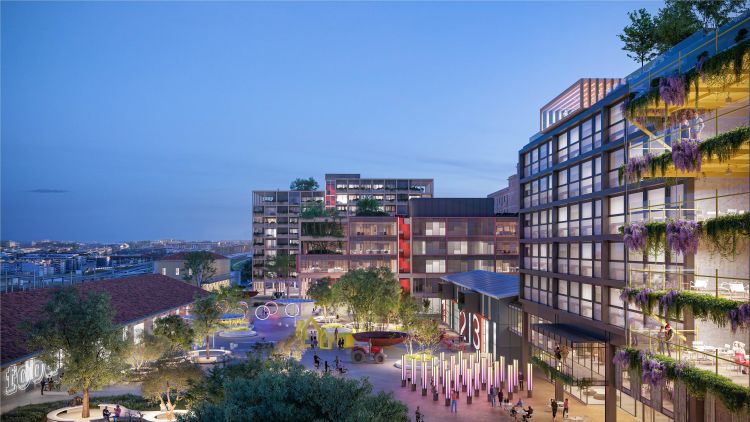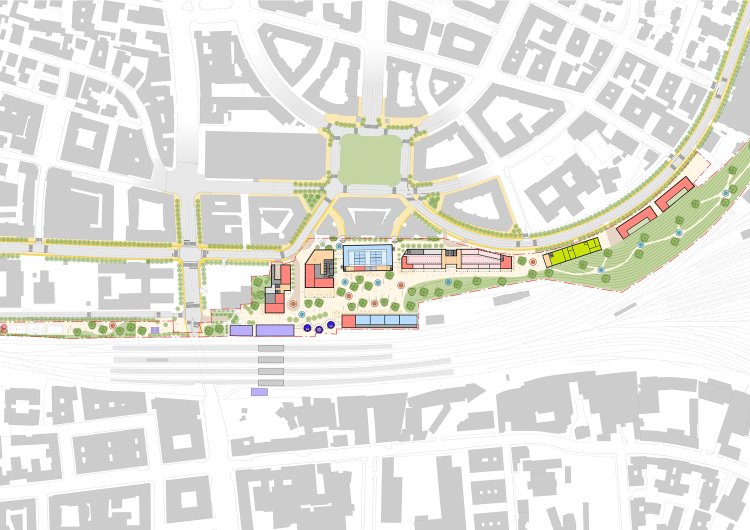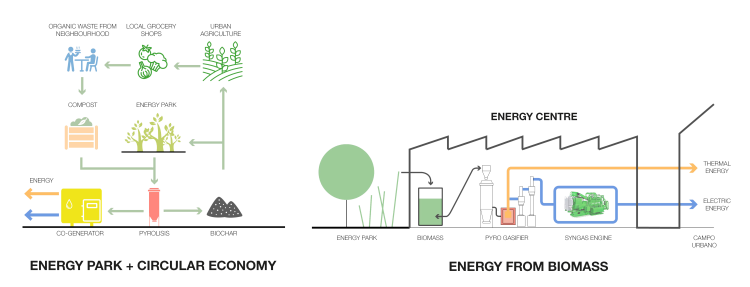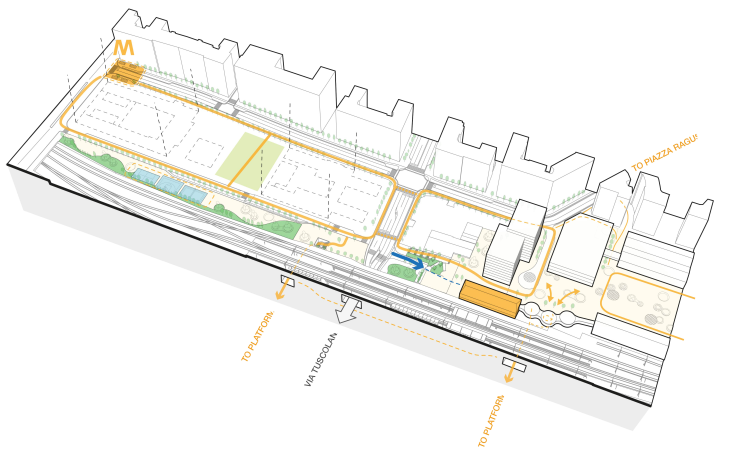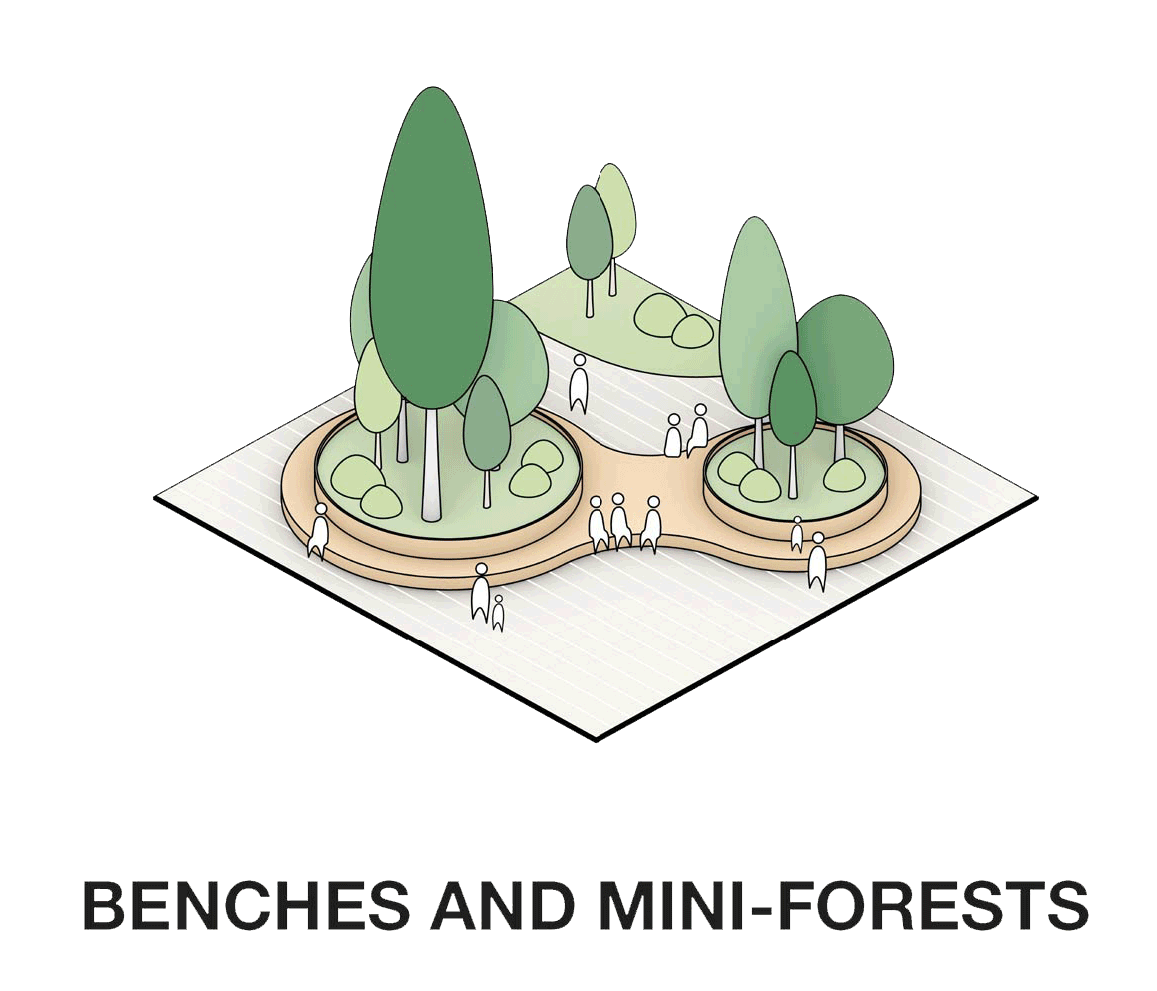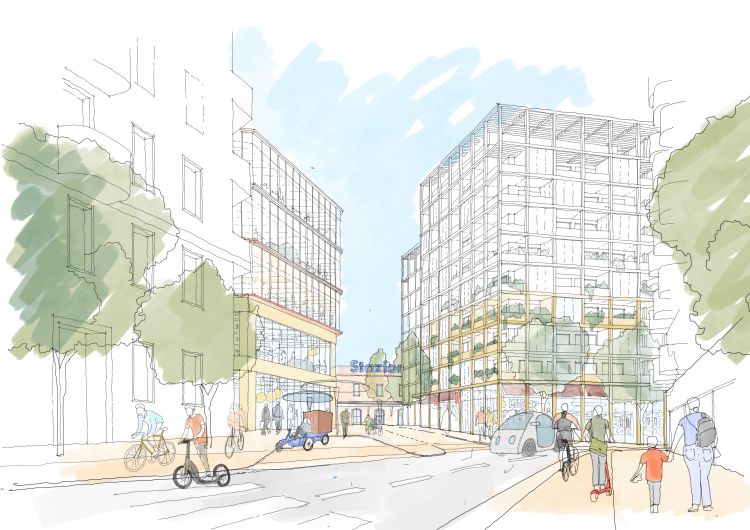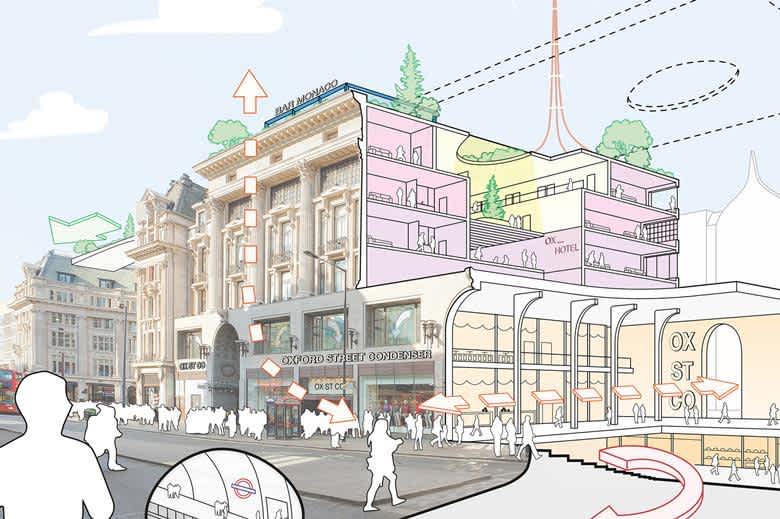AFK will transform a 41,000 sqm disused railway site in Rome into a low-carbon mixed-use neighbourhood - Campo Urbano, as part of the Reinventing Cities programme which encourages cities to strive towards net-zero urban developments. The car-free project will be self-sufficient in energy, will make use of biomaterials and will feature 'reversible' buildings that can be dismantled at the end of their useful lives
A vehicle of urban repair
Campo Urbano is the first carbon-negative and car-free urban district in Rome and revitalises a tightly constrained and linear former railway site to create a new community, with an emphasis on new technology, innovation and integrated smart solutions. Campo Urbano is also a vehicle of urban repair, stitching this 'island' site bounded by railway infrastructure back into Rome.
The new buildings will have active frontages to create a cohesive urban morphology to the area, and to provide continuity with the existing buildings which will be refurbished and enhanced to breathe new life into them, while also uplifting the sense of arrival into this new neighbourhood. The new buildings will be flexible and modular, crafted with an emphasis on environmental consciousness and recyclability - and designed for deconstruction at the end of their useful lives. A large linear park will also be created to improve biodiversity and greening of the site, which connects to Rome's metropolitan Green Loop, which is additionally complemented by a three-dimensional green network on both building façades and rooftops.
The new carbon-negative scheme includes a range of complementary uses and building types such as residential, office space, retail, a student hotel and an "Energy Park" that provides both green spaces for recreation, and a source of biomass for energy production. The masterplan designed around the concept of the 15-minute city, where all the essential functions and amenities required for day-to-day life are within a 15-minute walk or cycle.
Achieving carbon-negative status
As with all Reinventing Cities projects, a central aim is to achieve the lowest possible carbon footprint across a development's lifecycle. Campo Urbano aims to become carbon negative over a 60-year timeframe, exceeding the LEED Zero standard when the construction and management of the entire development is is taken into account.
This new district will meet its own energy needs through a mix of rooftop photovoltaics and biomass power, the latter involving a technique of heating waste such as compost from homes, woody crops from the Energy Park and sustainably obtained wood, to a high temperature in a low-oxygen environment to generate biomass heating, cooling and electricity and to produce synthetic gas (pyro-gasification).
Buildings "designed for deconstruction"
The new buildings within Campo Urbano will use mechanical rather than chemical connections, that effectively allow for disassembly at the end of each building's useful life, and homogenous materials that are easily recycled.
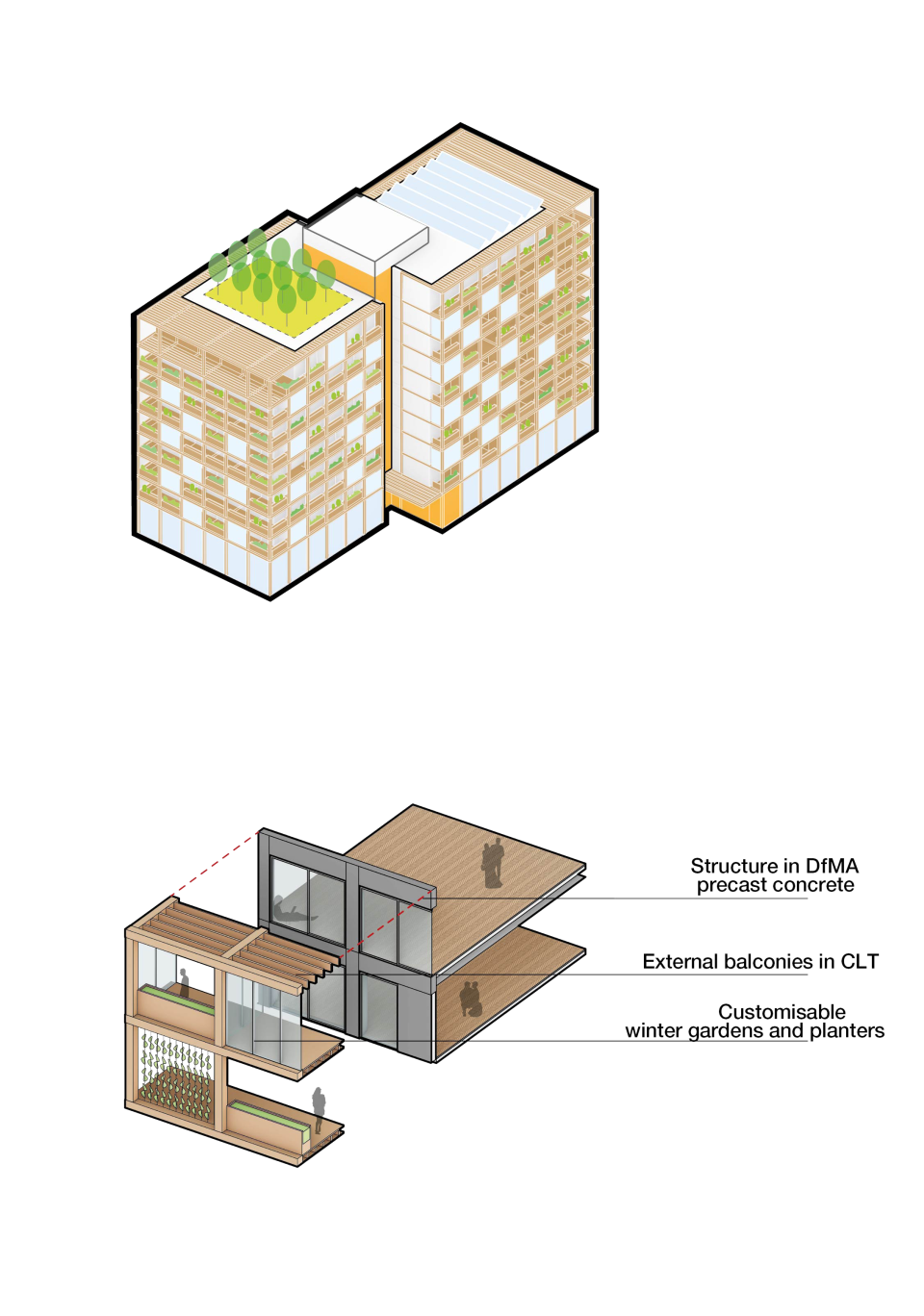
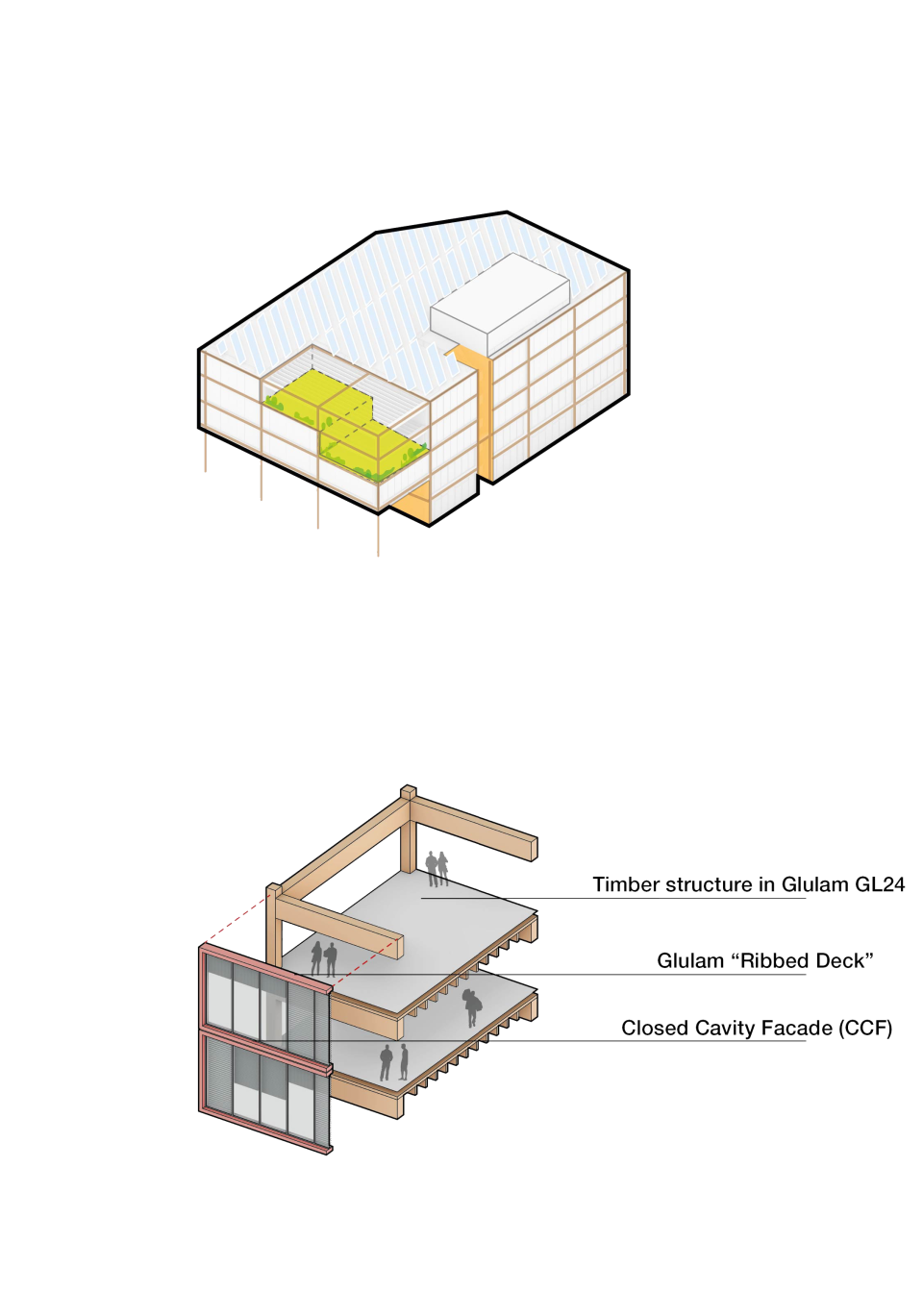
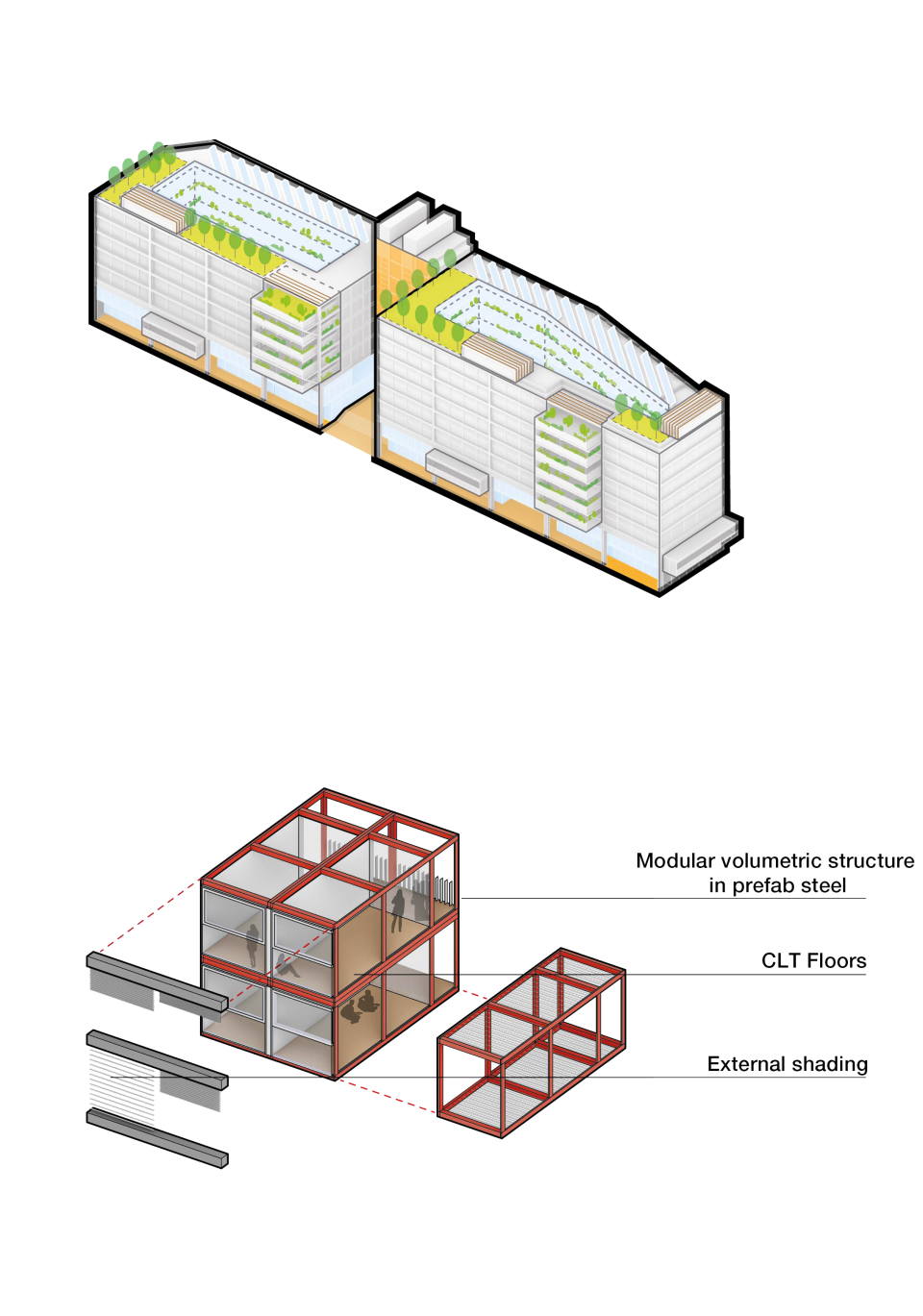
Campo Urbano also utilises innovative green construction principles to reduce embodied carbon, and makes employs low-carbon materials such as timber, including in an 8,000-square-metre glulam building. The project is also a huge step away from generic 'tabula rasa' urban development, with a strong focus on urban repair and a "retrofit-first" approach that carefully brings a number of the site's existing structures back into use, while incrementally weaving in new civic spaces and uses within the existing fabric of Campo Urbano.
A car free 'people-first' public realm
All of Campo Urbano's proposed public realm will be car-free - with a focus on people, street activity and safe and active travel. A detailed study was conducted to provide the rationale for the car free development, which included looking at future car-parking demand curves and optimising the dimensions of the parking infrastructure, and consolidating public and private car parking requirements. Campo Urbano has numerous travel options such as Park&Ride, Kiss&Ride, drop-offs and sharing mobility platforms accommodated within a compact underground mobility hub on two levels, which directly connects with both the main residential building and the train station.
A carbon-neutral future
Campo Urbano includes the largest urban energy park in Europe — a piece of green infrastructure that generates new opportunities for green jobs and integrates the clean energy resources of the site and a network of diverse buildings designed with the latest modular and timber technologies in mind.
There is a power purchase agreement in place for renewable electric energy to cover the substantial energy requirements for electric-vehicle charging, and a green infrastructure plan, which aims to create jobs to support the area's economic recovery, is part of the proposal. Campo Urbano will also partly rely on carbon credits earned by investing in carbon sequestration projects to offset emissions and help it get as close as possible to net-zero. The masterplan also aligns with many of the United Nations Sustainable Development Goals, as well as well as C40's global design priorities while responding to its context and what matters to the local community.
